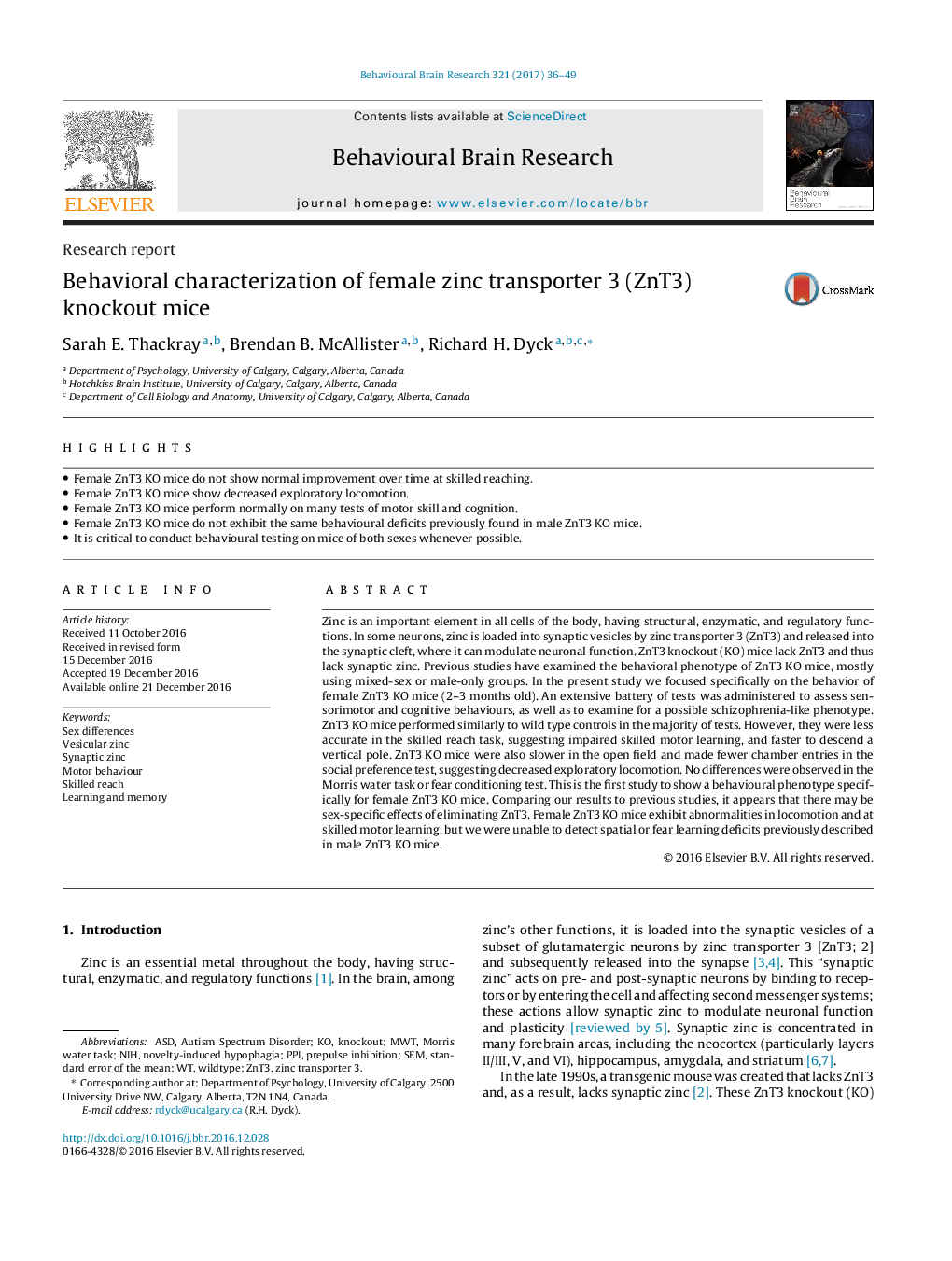| کد مقاله | کد نشریه | سال انتشار | مقاله انگلیسی | نسخه تمام متن |
|---|---|---|---|---|
| 5735590 | 1612912 | 2017 | 14 صفحه PDF | دانلود رایگان |
عنوان انگلیسی مقاله ISI
Behavioral characterization of female zinc transporter 3 (ZnT3) knockout mice
دانلود مقاله + سفارش ترجمه
دانلود مقاله ISI انگلیسی
رایگان برای ایرانیان
کلمات کلیدی
Vesicular zincPPIZnT3MWTNIHAutism spectrum disorder - اختلالات طیف اوتیسم گروهیSex differences - تفاوت های جنسیتیZinc transporter 3 - حمل کننده روی 3standard error of the mean - خطای استاندارد میانگینMotor behaviour - رفتار موتورSynaptic zinc - رویال سیناپتیکSEM - مدل معادلات ساختاری / میکروسکوپ الکترونی روبشیPrepulse inhibition - مهار پیش قاعدگیknockout - ناکاوتASD - نقص سپتوم یا دیوارهی دهلیزیwildtype - نوع وحشیnovelty-induced hypophagia - هیپوفیز ناشی از اخلاقMorris water task - کار آب موریسLearning and memory - یادگیری و حافظه
موضوعات مرتبط
علوم زیستی و بیوفناوری
علم عصب شناسی
علوم اعصاب رفتاری
پیش نمایش صفحه اول مقاله

چکیده انگلیسی
Zinc is an important element in all cells of the body, having structural, enzymatic, and regulatory functions. In some neurons, zinc is loaded into synaptic vesicles by zinc transporter 3 (ZnT3) and released into the synaptic cleft, where it can modulate neuronal function. ZnT3 knockout (KO) mice lack ZnT3 and thus lack synaptic zinc. Previous studies have examined the behavioral phenotype of ZnT3 KO mice, mostly using mixed-sex or male-only groups. In the present study we focused specifically on the behavior of female ZnT3 KO mice (2-3 months old). An extensive battery of tests was administered to assess sensorimotor and cognitive behaviours, as well as to examine for a possible schizophrenia-like phenotype. ZnT3 KO mice performed similarly to wild type controls in the majority of tests. However, they were less accurate in the skilled reach task, suggesting impaired skilled motor learning, and faster to descend a vertical pole. ZnT3 KO mice were also slower in the open field and made fewer chamber entries in the social preference test, suggesting decreased exploratory locomotion. No differences were observed in the Morris water task or fear conditioning test. This is the first study to show a behavioural phenotype specifically for female ZnT3 KO mice. Comparing our results to previous studies, it appears that there may be sex-specific effects of eliminating ZnT3. Female ZnT3 KO mice exhibit abnormalities in locomotion and at skilled motor learning, but we were unable to detect spatial or fear learning deficits previously described in male ZnT3 KO mice.
ناشر
Database: Elsevier - ScienceDirect (ساینس دایرکت)
Journal: Behavioural Brain Research - Volume 321, 15 March 2017, Pages 36-49
Journal: Behavioural Brain Research - Volume 321, 15 March 2017, Pages 36-49
نویسندگان
Sarah E. Thackray, Brendan B. McAllister, Richard H. Dyck,